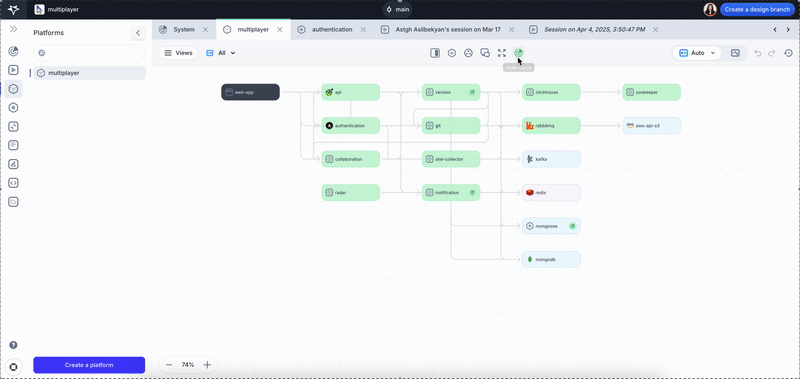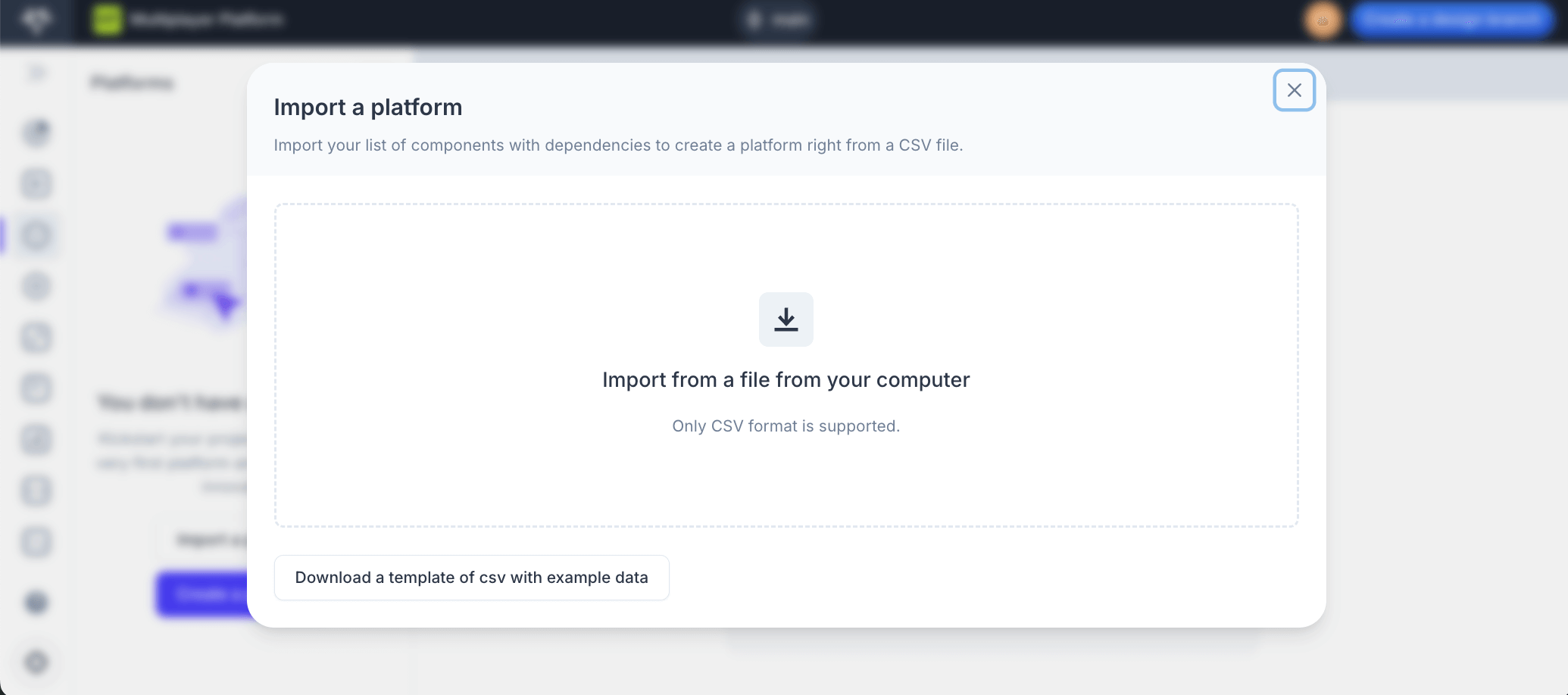Release Notes | 16 April 2025
📌 If you have any questions shoot us an email or join us on Discord! 💜
We’ve been hard at work improving Multiplayer to make visualizing distributed systems better.
🌟 Help us spread the word about Multiplayer by sharing these updates on Bluesky, Threads, or X. 🌟
New Features
Auto-Generate Architecture Diagrams with Platform Auto-Docs
You can now automatically populate your system architecture diagram using data detected by Auto-Documentation.
Whether you're creating a new Platform or enhancing an existing one, Auto-Docs gives you a fast, flexible way to visualize your system—including components and dependencies pulled directly from your telemetry data.
To get started:
- Open your project.
- In the left menu, click Platforms and select an existing Platform, or create a new one.
- From the top navigation, click Auto-Docs.

Clicking Auto-Docs opens a side panel with two sections:
(1) Top controls
-
Show Auto-Docs (toggle): Show or hide all auto-detected components and dependencies in the platform diagram.
-
Auto-select Dependents (toggle): When enabled, selecting a component will automatically select its connected dependencies and components.
(2) Auto-detected components and dependencies list
The complete list of all components and dependencies detected by Auto-Documentation (across all Platforms within your project) is split in two respective tabs.
In this section you can:
-
Apply All: Add all detected components and dependencies to your platform at once.
-
Apply Selectively: Manually review and apply (or ignore) individual components and dependencies.

CSV Import for Platform Components & Dependencies
You now have a third way to create Platform architecture diagrams—by importing from a CSV.
In addition to uploading images of architecture diagrams or adding components manually, you can now structure your system in a spreadsheet and import it directly.
To use it:
- Go to Platforms → Import a Platform
- Upload your CSV file containing components and dependencies.
- Need a template? Download the example CSV, fill in your data, and upload it back.

Merge Duplicate Components in the System Dashboard
Auto-Documentation detects all components in your system based on name. If your project uses specific naming conventions (e.g. environment-specific naming such as api-service-production and api-service-staging) this can result in duplicate entries that clutter your System Dashboard.
You can now merge these components into a single, canonical component and automatically assign the original names as aliases.
For example:
- Merge
api-service-productionandapi-service-stagingintoapi-service - The result is one clean component (
api-service) with the original names preserved as aliases
How to use it:
- Go to System Dashboard → Components tab
- Select the components you want to merge
- Click Merge
- In the merge window, name your canonical component—aliases will be applied automatically
- Click Confirm Merge to apply changes

Improvements
We’ve made several UX enhancements to improve navigation, tagging, and usability across Multiplayer. Here’s what’s new:
- Improved Side Panel Behavior Across the App: Side panels (or drawers) in Environments, Components, Notebooks, and Platform Debugger now overlay the main content rather than squeezing it. This improves readability and maintains layout consistency across Multiplayer.
- Compact Side Panel UI Enhancements: We’ve removed unnecessary top padding in all side panels and moved the undo/redo buttons next to the close button—resulting in a cleaner, more compact interface.
- Transactional Renaming via Modals: Renaming entities like Components, Platforms, APIs, Notebooks, Sketches, and Environments now happens in a modal, rather than inline. When renaming Components, the old name is automatically added as an alias, preserving historical context and traceability.

Bug Fixes
- Resolved quota error in Debug Sessions: Fixed a crash that occurred when expanding traces in debug sessions due to a local storage overflow.
- Prevented duplicate tag creation: You can no longer create multiple tags with the same name for a single entity, ensuring cleaner and more consistent tagging across the platform.
📌 Check our roadmap to see what's coming. If you’re interested in a particular feature send us a note - this will help us prioritize what you need the most!